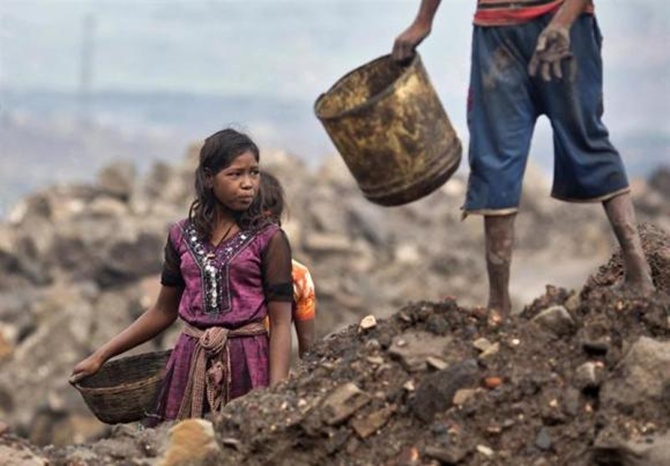The quantity of destitute in India, as numberd by the world, will soon change significantly. The World Bank has reconsidered the Purchasing Power Parity (PPP) list and the worldwide neediness line is continuously amended, as well. Set up together, the two measures will significantly adjust the measurable estimation of destitute in the nation. More likely than not, it will be much lower than the current figurings of the Indian government and in addition the World Bank.
The World Bank has set the worldwide destitution line at $1.25 a day at present. Yet, this was computed on the premise of the 2005 PPP list. By that measure, India had around 400 million destitute in 2010. The update of the PPP list proposes the Indian economy is much greater and the buying power much higher than assessed prior. It additionally implies that the quantity of destitute is much lower than evaluated prior. The bank is updating the neediness line to modify it to the changed list yet early computations by economists recommend the quantity of destitute in India is situated to lessen, measurably talking.
Once discharged, the new numbers, separated from their numerical admonitions, won’t just change the view of the Indian economy additionally obfuscate the flow of asset offering in the middle of created and creating nations internationally.
While the worldwide destitution figures are of little utilize practically, they are the premise of talking about the worldwide battle against neediness and being developed verbal confrontations they show where the created world ought to give trusts to the ‘poor nations’.
The Millennium Development Goals solicited that the number from individuals living underneath the destitution line of $1 (1993 PPP levels) be divided somewhere around 1990 and 2015. The Sustainable Development Goals that the world will receive by 2015 will ask that destitution be annihilated by 2030. In any case imagine a scenario in which it has been significantly decreased by measurable jugglery as of now.
The new PPP record, which was last changed in 2005, has blended a hornet’s home. India, the overhauled list shows, is a much bigger economy with individuals having more noteworthy obtaining force than was at one time thought. Actually, by the new appraisal, it is currently the third biggest economy measured at $5.75 in 2011 on PPP premise, with for every capita consumption at $4,735. On the past PPP file, it was the fifth biggest.

The PPP list is produced under the International Comparison Program run by the World Bank, a gigantic activity to group and think about costs of many wares and administrations from over the world. What one gets at the end of the activity is a measure of the amount of the same set of products can be purchased against a US dollar in different nations. As Kaushik Basu, now boss economist of the World Bank, places it, “in the event that a dollar in Ghana can purchase three times what it can purchase in the United States, then an individual who wins 1,000 dollars every month in Ghana is said to acquire 3,000 as far as ‘PPP-balanced dollars’.”
By taking the World Bank-recommended $1.25 as the destitution line on the past PPP list, India had 402 million destitute in 2010. However with the amended PPP number, the Center for Global Development’s once more of the envelope estimations put the figure at 102.3 million in 2010. Brookings Institution recommends it would tumble down to as low as 98.9 million. Worldwide neediness itself would fall by more than half from 1.2 billion destitute to 571.3 million overnight, for economists in any event. That implies the Millennium Development Goals focus for 2015 has been met. The story of this factual amusement lies behind the system for ascertaining the PPP file and the worldwide destitution line.
The worldwide neediness line was last drawn by taking a gander at the normal of the destitution lines of the poorest 15 nations and changing over it into a dollar premise utilizing the PPP list of 2005. There is no particular reason in respect to why the neediness lines of just these 15 nations are considered. “Neediness lines are drawn by fluctuating parameters crosswise over nations. At that point they are brought to equality utilizing the PPP record, which prompts peculiarities that can’t be accommodated,” clarifies Himanshu, colleague educator at Jawaharlal Nehru University.
The PPP file, which tries to look at the buying force of the dollar in diverse nations for the same wicker container of products, is based on a substratum which is not all that firm either. “While PPP is focused around an altered wicker container over the world, individuals don’t generally expend the same products in the same degree crosswise over nations or crosswise over wage levels. The weight allocated to products in the merchandise wicker bin may reflect all the more precisely the circumstances of a few nations or a specific area of society than others,” Himanshu clarifies.
The ware value information gathered for the PPP count have a urban inclination in creating nations. Take the illustration of processing rentals and expense of lodging. Diverse districts of the world give numbers assembled through fluctuating figurings. In instances of creating nations, where urban lodging and rentals go unrecorded by official facts, the results can be a long way from reality.
As an economy develops, while some extravagance merchandise may get to be less expensive, for the poor the fundamental things could go out of scope. As N C Saxena, who has dealt with distinguishing the poor in India, notes, “The estimation of the dollar renders the PPP value list an unjustifiable illustrative of the obtaining force of individuals in creating nations, particularly of poor people.”
The World Bank is seized of the matter, say a few individuals who have occupied with discussions with the bank or the United Nations. They recommend the new destitution line could be around $1.78-1.75. This current, Saxena’s over of the envelope estimations recommend, would put India’s poor at 110 million in 2011-12. That would even now be much lower than the numbers the Rangarajan council reported as of late.
Anyway, as World Bank boss economist Basu says in his web journal in regards to the PPP numbers, “We ought to just perceive that PPP has innate inadequacies and treat proclamations of nation size and power with, let us say, a fistful of salt.”
When these indices and poverty lines are drawn for the first time, they naturally come along with caveats and assumptions. But once they are published, people using these numbers miss or ignore the fine print Basu speaks of. The new poverty line will also become the sacrosanct truth with repetition, setting the global debate between developed and developing countries.
But then again, as Himanshu reminds, global financial transfers from developed to developing countries are ultimately guided more by strategic interests than poverty.



